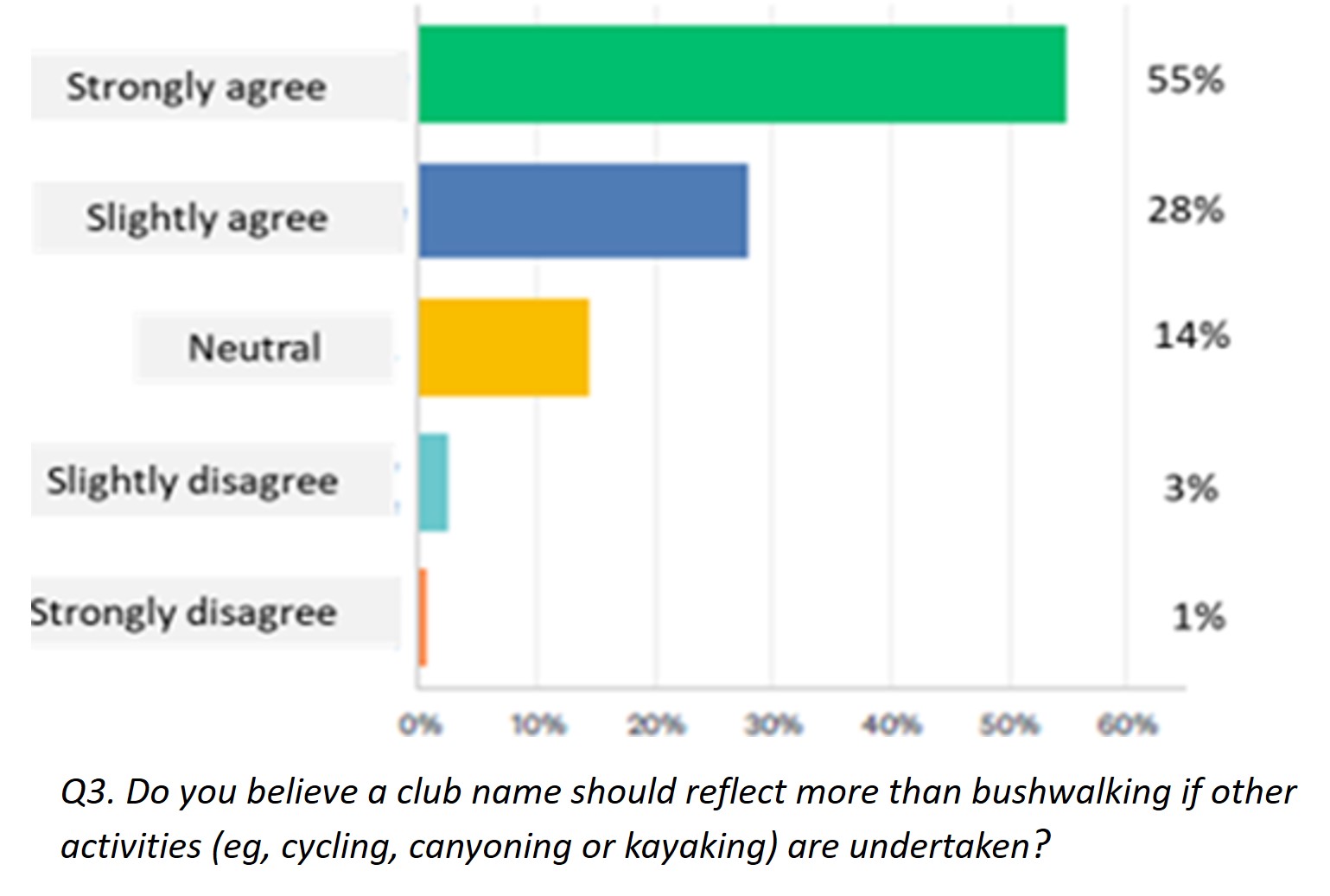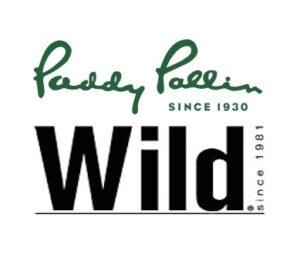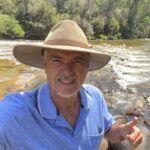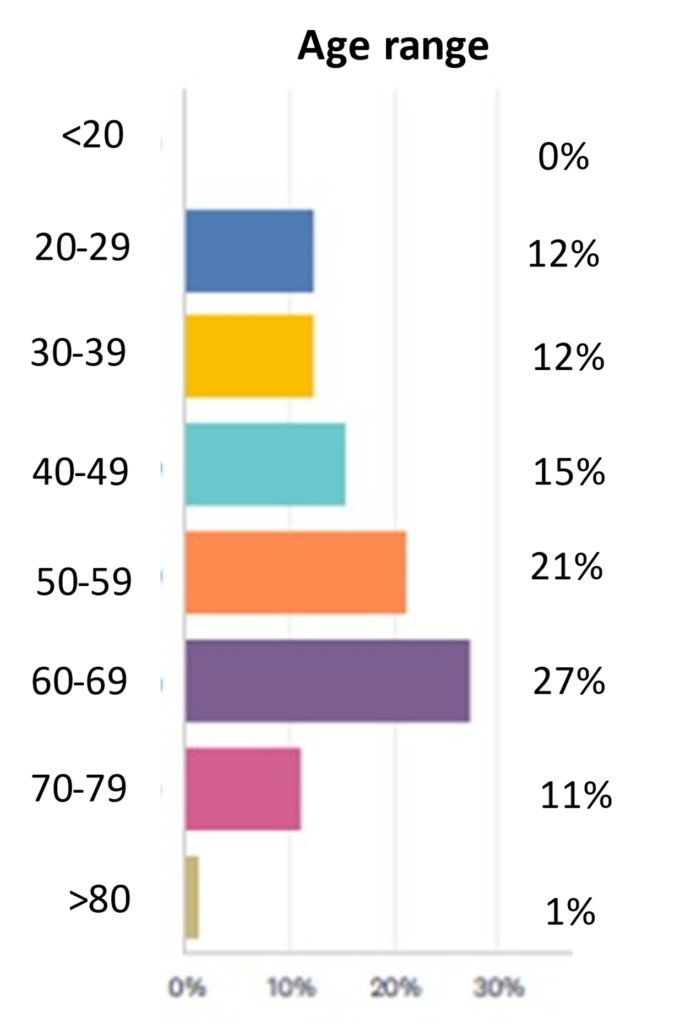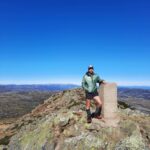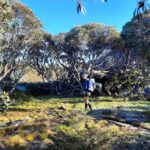Report on Young People in Clubs (YPIC) program and strategies, August 2024
Jon Gray, Chair, YPIC Working Group, BNSW
Summary
The membership of NSW and ACT bushwalking clubs is progressively aging, with relatively few young people joining our clubs. This poses a risk to the long-term viability of our clubs and means that young people are missing out on the joys and benefits of club membership.
The problem is difficult to address because the current older age demographic creates an inherent disincentive for new younger members to join our clubs. Nevertheless, the implementation of several key strategies may help to reverse this trend.
A high priority is for a rebranding and updating of our image, at both the State and Club levels, to create a greater sense of dynamism and adventure that we believe will be more appealing to younger generations. We recommend inclusion of the word ‘adventure’ in our names, together with inspiring updates to our websites. Other suggested initiatives include: enhanced social media presence; promoting the benefits of club membership; policies that welcome the young; and the creation of subgroups for young people within the broader club structures. All these strategies working together are required to achieve the success we need.
- Background
The age profile of existing formal bushwalking clubs in NSW and ACT is weighted to members over 55 and appears to be progressively shifting towards older members. Relatively few younger people are joining our Clubs. This poses a risk to the long-term viability of our Clubs and the whole organised bushwalking movement in NSW and ACT.
From physical activity participation data recently released in the 2022-23 National AusPlay survey results and specifically the Bushwalking data, it appears that only 1.1% of adult participation in bushwalking activity is ‘organised’ (eg, by an education body or scout association) and only about 0.2% is through a Club. It suggests that most Club participation is in the older cohort of 55 plus and that such participation is gradually declining. This confirms that despite being a popular activity amongst Australians, people are turning away from bushwalking clubs, especially young people.
The problem has been recognised and discussed by several people and organisations over recent years and decades. Recent examples include a BNSW member survey (2019), Ben Trewren (2019), Brooke Nolan (2023, Wild magazine), Darren Edwards (2024, unpublished), and Jon Gray (2023-24, BNSW YPIC Opinion Pieces). See copies and/or further details of these in References and the Appendices.
The situation is often considered a largely intractable problem due to the inevitable gradual aging of existing members and the preference for younger people to join activities with other similarly aged people – a type of ‘vicious circle’. Whilst this is partly true, there are measures we can take to attract younger members back into our clubs and gradually reverse the aging situation.
The increasing prevalence of less organised and formal social media groups such as ‘Meetup’ groups also serves to direct people away from our more formal clubs. In these groups, people do not need to formally commit to any single club and there are rarely any formal meetings, thus they may be viewed as more flexible and suited to young people with busy lives. Young people may also consider them more likely to provide opportunities for connection with others their own age.
- BNSW outdoor adventure terminology survey 2023
A survey released by BNSW in late 2023 aimed to examine people’s opinions and perceptions about the terminology currently used to describe bushwalking and related activities. It tested a proposition that naming and terminology used in conjunction with bushwalking clubs may influence the level of interest and desire to participate in our clubs, particularly from younger people.
There was a total of 161 respondents, seemingly mostly from BNSW member clubs. A summary of the results is presented on the BNSW website, with some key findings as follows:
- A fictional club name with the term ‘outdoor adventure’ received 50% of first preferences, compared to only 8% that contained the term ‘bushwalking’ alone.
- 83% of respondents agreed the name of a club should include more than bushwalking if other activities such as cycling, canyoning or kayaking were undertaken (including 55% who strongly agreed).
- 75% of respondents slightly or strongly agreed that the name of an outdoor club or organisation would influence their perception of how exciting, dynamic and ‘cool’ it was.
- 59% of respondents indicated they were somewhat or highly likely to be encouraged to join an outdoor club and possibly participate in leadership roles if it had an exciting, dynamic and ‘cool’ image.
- The qualitative comments reflected a range of views but highlighted the importance of multiple issues in attracting younger members into clubs.
- Measures to address the issue
A number of measures are proposed to help address the issue of declining membership of young people in NSW and ACT bushwalking clubs;
(i) Rebranding to improve image of Bushwalking Clubs
The YPIC Working Group believes that bushwalking and bushwalking clubs appear to have somewhat of an image problem within the broader community, especially by younger people. Regrettably it seems our clubs are increasingly being viewed as fairly staid environments predominated by retirees. They appear to lack a sense of excitement, dynamism and adventure that young people (and the young at heart) may be seeking.
Additionally, many of our bushwalking clubs engage in outdoor adventure activities other than bushwalking, but this is often not clearly evident from our names and websites. We need to make it clear that we are about ‘outdoor adventure’, with bushwalking (or hiking), being supplemented with a range of other adventure activities such as cycling, kayaking, canyoning and more.
The YPIC Working Group believes a rebranding is necessary, for both Bushwalking NSW and many individual member clubs.
- Renaming
We advocate for the addition of new terms such as ‘outdoor adventure’, or merely ‘adventure’, into our names. Thus, for example, Bushwalking NSW might change to Bushwalking Adventure NSW. The fictional Highlands Bushwalking Club might change to Highlands Bushwalking Adventure Club.
Such a name change would be consistent with results from the above-mentioned 2023 outdoor adventure terminology survey.
Some people have expressed concern that the term ‘adventure’ implies extreme outdoor pursuits such as rock climbing, zip-lining or parachuting, but we maintain this is not the case. It is just a term to signify an activity that is out of the ordinary day-to-day predictable routine. Even standard bushwalking may be considered an ‘adventure’.
Our recommended way forward is for BNSW to conduct a further survey of individual members in the coming year to gain an indication on the level of support for a name change, followed by a formal voting process amongst member clubs. For the individual member clubs, decisions on renaming and rebranding are entirely at their own discretion. There should be no pressure or expectation for any name changes for existing clubs.
- Updating of websites
Even if renaming does not occur, the updating of club websites to convey a greater sense of adventure is recommended. The updated content should showcase the full extent of activities of the club. Preferably, they should feature images with younger people.
- Further comments about club image
We believe that with the right image, younger people may be less concerned about a relatively older age makeup of a club. When people are fully committed to a cause or endeavour, such as a commitment to conservation, human rights or adventure, they may be less concerned about joining in with older people. Imagine a young person enthused about going on an Antarctic adventure. We believe that if the opportunity arose, they would join an Antarctic expedition irrespective of the age of other expedition members. They are primarily in it for the ‘adventure’ and the age range of the group is almost irrelevant. A similar principle might apply to our own ‘adventure’ clubs in NSW and ACT. We need to promote this ‘adventure’ minset.
We need to create an environment where younger generations feel excited and proud to be a member of their bushwalking/outdoor adventure club, to literally seek out leadership roles and encourage their friends to do likewise. The YPIC Working Group is convinced that a change of image through rebranding will create such an environment and gradually bring younger members back to our clubs.
(ii) Enhanced social media presence
An enhanced social media presence, such as on Facebook or Instagram is recommended. This appears to be an effective way to attract new interest and membership in our clubs, particularly from younger tech savvy people. Several clubs have reported measurable success in gaining new members, including younger members, through these measures.
Social media also serves as a communication tool within clubs, through for example the sharing of photos from recent trips, which may appeal to younger generations.
(iii) Promote benefits of bushwalking clubs
We need to promote the many advantages and benefits of joining bushwalking and outdoor adventure clubs over less formal alternatives such as social media groups. These include the:
- safety elements: with skilled and knowledgeable trip leaders and companions in many elements of outdoor adventure including navigation, rope skills, first aid, etc. Training events on these elements are a usual feature in many of our clubs. Access to such skills and training is not usual through social media groups like Meetup Groups
- accident and personal indemnity insurance: with the insurance cover through Bushwalking Australia taken up by most clubs. There is a high level of coverage against accidents (going beyond what is covered by Medicare) and protection against legal claims made against club and trip leaders. No such insurance is offered with social media groups or on independent private trips
- low costs: the costs of annual membership is typically in the order of $30-100 pp, which represents enormous value for money. Such costs are very low compared to any commercial based trip which can be $100s for just a single weekend trip
- ongoing meaningful social connections: the structure of an established club provides a stable environment for the formation of long-lasting connections and friendships.
- The role of bushwalking clubs in conservation and environmental protection may appeal to many young people.
(iv) Welcoming club policies
Recent feedback to the YPIC Working Group has emphasised the need for club policies that are welcoming and suitable for younger people. These include:
- trip programs and schedules that ensure sufficient weekend activities, as weekday trips usually cannot be attended by young working people
- offering a range of activities that include some more challenging trips to appeal to young and adventurous types.
- friendly and welcoming attitudes by all members to young newcomers into the club
- offering mentoring services to help train and guide younger members
- inclusion of social functions that might appeal to young and single members
- inclusion of child friendly trips to encourage young families
- offer reduced or flexible membership fees and/or other financial incentives to the young.
(v) Facilitate subgroups that primarily cater for younger age members
A successful example of this strategy is demonstrated by Sydney Bush Walkers, who have a created a subgroup called the ‘SBW Tiggers’. This is an informal group of younger members in their 20s and 30s, who are invited to participate in bushwalks and social activities for that subgroup alone. They are also encouraged to integrate into the full Club program. The name comes from ‘The Tigers’, a group of tough resilient walkers who pioneered many challenging bushwalking routes in NSW in the 1930s.
Such a model could be adopted by other clubs to help attract younger members. Once a core of young people forms, others may be inclined to come on board as well.
- Conclusion
The YPIC Working Group have outlined a number of strategies to help address the decline of youth membership and progressive aging of bushwalking clubs in NSW and the ACT. A listing of other suggestions made by others are provided in the accompanying appendices.
We believe that the greatest success will be achieved by pursuing all these strategies in combination. Applying some measures in isolation is unlikely to achieve the success we need. It is hoped that implementing these measures will help ensure the ongoing viability of our valuable bushwalking/outdoor adventure clubs in NSW and the ACT.
- References
Australian Sports Commission (2023), AusPlay results, National Sport and Physical Activity Participation Report 2022-23, including bushwalking specific data
BNSW (2019), Survey of BNSW member clubs on YPIC issue (unpublished), (see summary of results in Appendix A)
BNSW (2024), BNSW outdoor adventure terminology survey 2023 results
Edwards, Darren (2024) (unpublished), Strategy for Bushwalking Clubs to Attract New and Younger Members, Trail Hiking Australia, June 2024 (see Appendix B)
Gray, Jon (2023), Opinion piece: our bushwalking movement needs a change of image (Jon Gray, Chair, BNSW Young People in Clubs, YPIC)
Gray, Jon (2024), A name change and rebrand for Bushwalking NSW? (Jon Gray, Chair, BNSW Young People in Clubs, YPIC)
Nolan, Brooke (2023). An Age Old Problem, Can bushwalking clubs attract a new generation of adventurers? Wild magazine 190, Summer 2023, pp 44-46. (see extract in Appendix C)
Trewren, Ben (2019), Youth and Young Adult Engagement in Bushwalking Clubs, a presentation to Bushwalking Australia face-to-face conference for Walking SA, 2018, reproduced on BNSW website 2019 (see Appendix D)
Appendix A:
Survey of BNSW member clubs on YPIC issue, 2019 : summary (unpublished)
Compiled from 20 responses representing 13 different clubs
Reasons for wanting to attract people under 30
- Ensure club has a future, young people represent renewal, bushwalkers coming up the ranks, life of club depends on younger members
- Help societal levels of boredom/ mental health/ isolation
- Get the young enthusiastic about nature and our care of it.
- Enjoy the varying energies and conversations that the varying age ranges allow for.
What do you think needs to change to attract <30s?
- Better marketing of bushwalking to young people; mobile friendly access to website; immediate access to walks program; deliver program in a way that appeals.
- Promote benefits offered by a club
- Other young people; to provide younger role models
- Older Club members need to be more pro-active in personally inviting known/likely younger people
- Have enough engaging activity; more grade 4+ walks; offer other activities, eg, canyoning, abseiling
- Leaders focused on needs of young people
- Targeted activities; provide dedicated comms and social activities for members under 40 yrs, and maybe also under 30 yrs
- Others: Child protection processes, offer parent and child walks, facilitate easier access to and from walks
Appendix B:
Strategy for Bushwalking Clubs to Attract New and Younger Members
(unpublished)
Darren Edwards, Founder, Trail Hiking Australia, June 2024
Introduction:
Bushwalking clubs recognise the need to adapt and attract new, younger members in a digital age with platforms like Meetup offering a different experience. This strategy outlines a multi-pronged approach to address this challenge.
Understanding the Problem:
- Growth of unregulated hiking groups on platforms like Meetup.
- Perception of Bushwalking Clubs as old-fashioned, too regulated, and catering to a specific demographic.
- Lack of beginner-friendly options and perceived difficulty of hikes.
- Younger audiences might simply not be aware of bushwalking clubs or the benefits they offer.
- Need for a more engaging and social experience for younger audiences.
Proposed Actions:
- Modernise the Brand Image and Online Presence:
- Develop a User-Friendly Website: Allow for easy trip exploration, booking, and communication with club leaders. Ensure the website is mobile-responsive, as many younger users prefer accessing information via their smartphones.
- Increase Social Media Engagement: Create engaging content showcasing the beauty of bushwalking, diverse hikes, and the social aspects of clubs. Leverage Instagram, TikTok, and YouTube for visual content. Collaborate with influencers who resonate with your target demographic. Regularly update social media content to keep it fresh and engaging.
- Rebrand with a Modern Logo and Messaging: Maintain the core values of the club while presenting a more contemporary and inclusive image. Incorporate feedback from potential younger members during the rebranding process to ensure the new image aligns with their preferences.
- Enhance Accessibility and Cater to All Levels:
- Promote the Hike Grading System: Categorise hikes by difficulty and experience level, making it easier for newcomers to find suitable options. Use clear, standardised icons and descriptions for the hike grading system to avoid confusion.
- Develop a Beginner-Friendly Program: Offer introductory courses on bushwalking basics, safety, and navigation. Consider offering virtual workshops or webinars as an introduction to bushwalking basics, which can then transition into practical, on-site events. • Promote “Come and Try” Events: Organise free introductory hikes with experienced leaders. Promote these events heavily through social media and local community boards to reach a broader audience. Offer family-friendly activities to attract younger members with children.
- Foster a Strong Community and Social Experience:
- Organise Social Events: Host pub nights, movie screenings, or skills workshops to build camaraderie beyond hikes. Partner with local businesses or popular venues for social events to increase visibility and attract non-members.
- Develop a Mentorship Program: Pair experienced walkers with beginners for guidance and support. Highlight success stories from the mentorship program on social media to encourage participation.
- Showcase the Social Aspect: Use photos and videos on social media to highlight the fun and community spirit of club hikes. Create a dedicated section on the website for user-generated content, where members can share their experiences and stories.
- Diverse, Safe, and Inclusive Atmosphere: Bushwalking clubs are open to everyone and create a welcoming environment that fosters a sense of community and support for all members. Regardless of age, background, or experience level, you’ll find a safe and inclusive space to connect with fellow hikers who share your passion for the outdoors. The emphasis is on enjoying the adventure together, supporting each other’s growth, and creating lasting memories.
- Highlight the “Families Welcome” Aspect: Clearly emphasise that families are welcome on hikes. Showcase pictures and stories of families enjoying club activities in your communication materials.
- Attract Diverse Interests: Consider organising themed hikes (e.g., photography hikes, nature conservation hikes) to attract diverse interests.
- Leverage Technology:
- Statewide Meetup Group: Create a single, overarching Meetup group for your state. This allows all bushwalking clubs within the network to host hikes, leveraging the Meetup platform’s wide reach to attract new members. However, this approach may have less local focus and may not showcase the unique offerings of individual clubs.
- Club-Specific Meetup Groups: Each bushwalking club can create its own Meetup group to host hikes. This allows for a more targeted approach, highlighting the club’s specific hikes and local knowledge. The drawback is that it requires individual management by each club and may have a smaller initial reach.
- Statewide Meetup Group vs. Club-Specific Groups: Consider a hybrid approach. Maintain a statewide presence for broader reach while allowing individual clubs to retain their local identity and offerings.
- Offer Online Resources: Create a library of educational resources like bushwalking guides, safety tips, and trip reports. Regularly update the resource library with new content and consider creating a blog or vlog series featuring expert advice and member experiences.
- Promote the Value Proposition of Bushwalking Clubs:
- Highlight Safety and Expertise: Emphasise the benefit of experienced leaders and insurance compared to unregulated groups such as Meetup. Share testimonials and case studies that illustrate the benefits of guided hikes and the club’s expertise. Share testimonials and stories from younger members to make the message more relatable. Highlight unique adventures or expeditions that are exclusive to club members.
- Experienced Leaders: Experienced leaders ensure a safe and enjoyable experience for all on every hike. They possess a deep knowledge of the trails, can assess potential risks, and are equipped to handle emergencies.
- First-Aid and Emergency Response Training: All leaders undergo rigorous training in first aid and emergency response procedures, providing an extra layer of security for everyone on the hike.
- Risk Management Procedures: Bushwalking clubs have established risk management procedures to assess hike difficulty, weather conditions, and ensure proper preparation for each trip. This minimises potential hazards and creates a safer environment for all participants.
- Skill-Building Workshops: Many clubs offer optional skill-building workshops on topics like navigation, first-aid, and safety. These workshops empower members with valuable skills, boost confidence, and enhance the overall enjoyment of hikes.
- Focus on Environmental Stewardship: Promote the role of bushwalking clubs in responsible outdoor recreation and conservation. Highlight specific conservation projects and partnerships with environmental organisations to demonstrate the club’s commitment.
- Showcase Unique Experiences: Highlight the curated hikes, diverse locations, and sense of community offered by your club. Offer exclusive events or hikes that are only available to club members, creating a sense of exclusivity and added value.
- Physical and Mental Wellbeing: Promote the health advantages of bushwalking, including stress reduction, improved cardiovascular health, and increased strength and endurance. Bushwalking is a fantastic way to connect with nature and improve your overall well-being. Share scientific studies and expert opinions on the health benefits of bushwalking to reinforce this message.
- Continuous Improvement and Feedback:
- Conduct Regular Member Surveys: Gather feedback on club offerings and preferences of younger demographics. Ensure surveys are short and user-friendly to encourage higher response rates. Use tools like Google Forms or SurveyMonkey for easy distribution and analysis. Regularly publish the findings from surveys and the actions taken based on feedback to demonstrate responsiveness. Create focus groups with younger members to gather more detailed insights.
- Monitor Social Media Trends: Identify what resonates with younger audiences and adapt communication strategies. Use social media listening tools to track trends and sentiment analysis.
- Track and Analyse Engagement Data: Measure the effectiveness of marketing efforts and online presence. Implement Google Analytics or similar tools to measure website and social media performance, adjusting strategies based on data insights.
- Addressing Time Constraints:
You can’t replace experienced leaders, but you can acknowledge the time constraints and preferences of younger demographics. By offering a variety of options and creating a welcoming environment, bushwalking clubs can demonstrate their value proposition to a wider audience.
- Shorter, Time-Efficient Hikes: Offer a range of walks with varying durations, catering to busy schedules. Include options for after-work evening hikes or shorter weekend excursions.
- Focus on Accessibility: Promote walks closer to urban areas or easily accessible by public transport. This reduces travel time and makes participation more convenient.
- Family-Friendly Events: Organize walks specifically designed for families with children. These can be shorter distances with engaging activities for kids along the way.
- Catering to Different Preferences:
- One-off Events and Weekend Getaways: Alongside regular club activities, offer standalone events like guided day hikes or weekend camping trips. This caters to those who prefer occasional participation.
- Solo Bushwalking: Acknowledge that some people prefer solo adventures. Offer resources and safety tips for independent bushwalking within the club’s area of expertise.
- Addressing Concerns about Club Structure:
- Intergenerational Appeal: Reiterate the club’s welcoming nature for all ages. Showcase the benefits of a multi-generational experience, where younger members can learn from experienced hikers and vice versa.
- Flexible Membership Options: Consider offering tiered memberships or trial periods to reduce commitment. This allows people to try bushwalking with the club before committing to a full membership.
- Weekend and After-Work Walks: Schedule hikes on weekends and evenings to cater to working professionals and families.
- Additional Considerations:
- Diversity and Inclusion: Promote diversity within the club by showcasing a variety of members from different backgrounds and creating an inclusive environment.
- Partnerships and Collaborations: Form partnerships with local schools, universities, and youth organisations to introduce bushwalking to younger audiences.
- Flexible Membership Options: Offer trial memberships to give potential members a taste of what the club offers without a long-term commitment. Offer flexible membership plans, such as monthly or quarterly memberships, to lower the barrier for entry (if there is one).
Conclusion:
By implementing these strategies, Bushwalking Clubs can create a more modern, accessible, and engaging experience, attracting younger demographics and fostering a love for the outdoors. This comprehensive approach will showcase the unique value proposition of bushwalking clubs, emphasizing adventure, personal growth, and a strong sense of community. By continuously gathering feedback and adapting strategies, bushwalking clubs can ensure they remain thriving organizations for future generations.
I do hope this strategy is beneficial and welcome any feedback or discussion.
Darren Edwards
Founder, Trail Hiking Australia,
+61 408 006 430,
explore@trailhiking.com.au; www.trailhiking.com.au
Appendix C:
Extract from Wild magazine article, 2023
An Age Old Problem: Can bushwalking clubs attract a new generation of adventurers?
Brooke Nolan, Wild magazine 190, Summer 2023, pp 44-46.
While bushwalking clubs definitely face challenges in attracting a younger generation, there are clear opportunities for revitalisation and growth. It might not be easy but by
- rebranding,
- embracing social media and
- showcasing the unique benefits of joining a club,
hopefully clubs can continue to attract new members, ensuring their long-term viability and, above all, inspiring a new generation to enjoy the outdoors with respect.
Additional strategies to attract younger members:
- Hold events aimed specifically at younger members
- Include harder/more obscure trips that people can’t easily access without a club
- Think about adding kid-friendly hikes for young families
- Promote training like canyoning skills and navigation to show value
- Promote carefully via social media
- Ensure your club’s website has imagery of young people engaging in activities
- Try traditional advertising like flyers and posters in places young people go.
Appendix D:
Youth and Young Adult Engagement in Bushwalking Clubs
https://www.bushwalkingnsw.org.au/youth-young-adult-engagement/ Ben Trewren, April 2019
Ben Trewren attended the 2018 Bushwalking Australia Face-to-face conference for Walking SA and shared his thoughts on Youth & Youth Adult Engagement in clubs and outdoor adventure groups:
G’day all,
I was really encouraged by your recognition of and enthusiasm towards engaging young people within your states, so I have put some thought to some engagement ideas that you may wish to pursue.
To begin with, I think the challenge needs to be tackled by asking some key questions of your [clubs and] groups.
Is there actually an identified ‘young person’ problem? If so, what does this look like? (Remember, this is your problem, not theirs).
Are current members ready to engage with young people? (Doesn’t need to be a shift in your identity, but it does likely require a shift in attitude and/or culture).
Do young people wish to engage with your club/group? If yes – can you determine the barriers? If no – why not?
What is the incentive? What can you offer to a young person that others can’t? (You DO have a lot to offer!)
To help work through these questions, here are some ideas/strategies you might consider:
When it comes to implementing strategies as I discuss below… please don’t look to do what you think is best. Collaborate with young people on what IS best!
Keep in mind also, that engaging young people may take more give, than take (especially to begin with) – but in the long run, it can absolutely be worth it. Young people today may be different to you when you were their age, but they still have as much potential, value and ambition as you did/do!
Here we go:
- Access to [Walks]/Hikes
Provide them with hike options to get them walking in their own time – an initial point of engagement. Ensure they are easy to understand and use (consider GPX files). I think we do this incredibly well at Walking SA through our website.
- Duke of Edinburgh
Have members train and register as Duke of Ed Award Leaders, then offer to assess young people completing the award. I know in SA, there is a shortage of Award Leaders. I’ve trained as one – it’s not hard, an online course.
- Subject Matter Experts
Offer your skill and experience to verify/assess a young persons ‘outdoor education’ learning – this can apply to high school students, TAFE students and uni students.
- Diversity of Options
Offer a range of group hikes that are maybe more appealing within their ‘lifestyle’ – early morning, night hikes, school/uni holidays etc.
- Networking
Looking beyond the outdoor recreational benefits. Many young people are looking for employment opportunities and maybe people in your clubs can offer this beyond the bushwalking experiences.
- Mentoring
See bushwalking as more than just a recreational activity. It’s a chance for a young person to work on their wellbeing and mental health with the support (mentorship) of an older, experienced, patient and wiser person. A chance to have time and space to think, talk through challenges, breath in fresh air, de-stress… whatever it might be for them. This may not require a specific ‘program’, but just a consideration to the fact that a young person may get a different outcome from an experience to what you might typically consider. I have so many thoughts on this one because of my own experience.
- ‘Discount’ Incentives
Young people will typically be students, apprentices, trainees or on crap money. Any opportunity to reduce their financial burden will help. Discounts with retailers, concessions on membership fees, free entry to events/activities. The tight nature of their spending won’t last forever, but can be a great offset to begin with.
- Leverage Relationships
Get involved with outdoor educators, Scouts groups and similar and piggy back of the introductory work they are already doing to introduce young people to outdoor recreation. Otherwise, you risk them becoming absorbed in mainstream sport (or no physical activity). Outdoor recreation has so many benefits on mainstream sports, the sell is easy (there was only so many Saturday’s I could handle being wasted away after being cleaned up for a duck). It’s making the connection between what their school (or similar) offers them for a week or two and the ongoing opportunity that is the challenge.
- Up-skill/Formal Education
Seek opportunities to partner with local training bodies (RTOs or similar) and see if they’ll incorporate part of their course into your groups activities. For example, a learner has to lead one of your walks which can then be recorded in their training log.
- Tech Engagement
Consider introducing more ’tech’ into your activities that would appeal. Thinking GPX files, Geocaching, Strava, Radio Communications etc.
- Content
Let’s not rule out the appeal of young people keen to capture the ‘money shot’, write about their experiences on their blog, put together an adventurous clip from their GoPro or similar. If you can provide and facilitate opportunities to do this, it can then come full circle and benefit you. You may have just engaged your next marketing and communications person to take care of your website and social media. Who knows…?
- Gear
Two thoughts on this one – the first one is the young people like me who froth on gear. Think ‘Geardos’. Provide opportunities for people to play with different types of gear, explore what’s new in the market, and share what the good ol’ days were like (before everything in a kit was made of titanium). The second one is to appeal to the reuse/recycle types. Consider gear swap nights, share information about ethical products and purchasing etc. Patagonia and North Face are two of many brands doing lots in this space.
I hope this has been of some help or inspiration (and these points can apply to all outdoor recreation including sea kayaking, not just bushwalking). Young people are just incredible (they always have been).
On reflection, I would love to help you and your state body, clubs, groups etc work through these present challenges, because I’m excited to think about the potential for when we can engage them. So please let me know if there is anything I can do.
To conclude, I’ll leave you with some words from Patagonia founder, Yvon Chouinard – “The word adventure has gotten overused. For me, when everything goes wrong – that’s when adventure starts”.
Guest Blogger: Ben Trewren, Join Ben on his Churchill Fellowship travels for outdoor adventure: https://www.bentrewren.com/ (link now broken)

